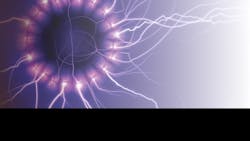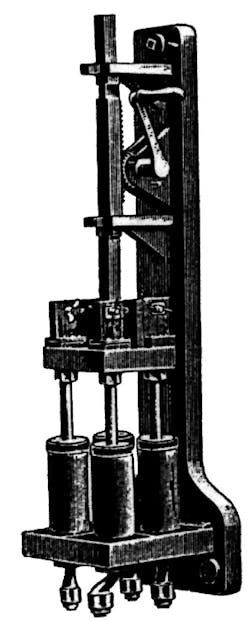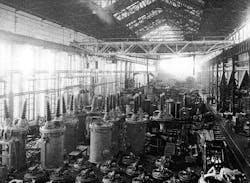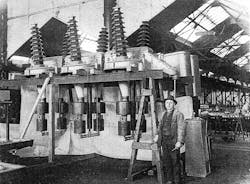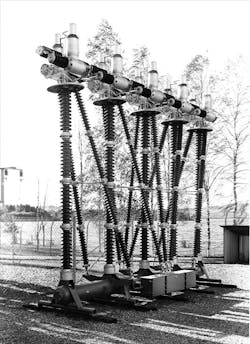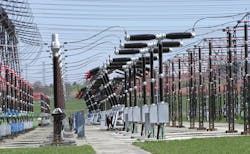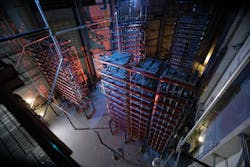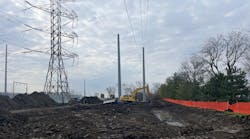The electric grid took a jump start back in 1882 with the first commercial electrical system. This system only had 59 customers on a 110-V direct current (dc) distribution system that covered a few blocks in Lower Manhattan, New York, U.S.,but it started the growing customer demand cycle. A year later, it had 513 customers, and the rest is history. Over the past 130-plus years, there has been a worldwide customer base jump to billions of people with a huge dependency on electricity.
Electricity has become so important to society that it has been linked directly to the gross domestic product of countries. Without access to electricity, populations suffer. Globally, the U.S. Energy Information Agency (EIA) reported worldwide consumption in 2011 of about 18 trillion kWh of electricity, and it continues to increase. EIA is projecting consumption to increase more than 50% by 2035.
This is all pretty amazing when thinking back to what pioneers such as Thomas Edison, George Westinghouse, Nikola Tesla, Werner von Siemens, Jonas Wenström, Herr von Dolivo-Doborowlsky and the others must have faced as they developed the basic equipment — transformers, switches, circuit breakers — needed for the fledgling industry. Edison alone received more than 200 patents from 1879 to 1882 while working on problems he encountered in the generation and distribution of electricity. Equally amazing was the insight these intellectual giants had for the needs of the industry.
Clearly, inventions and innovations have powered the power industry. And nowhere is this more evident than in the power circuit breaker, the invention credited to American Charles Grafton Page. He came up with the basic device in 1836 after being inspired by English scientist Michael Faraday’s work with the alternating-current (ac) theory. Edison tinkered with the device and was issued a patent in 1879 for improvements to the design. Others added to the development, but it took many years to get a device that was acceptable.
An Arc to Deal With
To appreciate the enormity of the challenges those first breaker developers had to overcome, it is important to look at some basic circuit breaker principles. So as not to get bogged down in the engineering details, consider this elementary overview:
Basically, a circuit breaker is a mechanism that brings two conductors into contact to form a current-carrying path. When the breaker operates, the contacts are parted, but current wants to continue flowing. The contacts are subjected to an electrical arc that forms from ionized gases (plasma) between the opening and closing contacts. In a power circuit breaker, these electrical arcs contain an enormous amount of energy, which increases as voltage and current levels increase. An arc’s temperatures can reach 30,000°C (54,032°F) with pressures hitting 20 MPa or more.
How to Turn It Off
So that was the problem, and the founders of the industry recognized it. They realized it was just as important to be able to de-energize a circuit as to energize it, but there would be a lot of work ahead to do it and materials to be developed. Some of the early disconnector designs were shocking (no pun intended), to say the least. One attention-catching device was a disconnector used to isolate a generator in Berlin in the mid-1880s. It was basically a copper bar held in place by a set of clamps. The clamps were released, letting the bar fall, which opened the circuit.
Another early disconnector was a knife-blade switch submerged in an open tank of water or mineral oil. There was a mechanical linkage that allowed someone to open the submerged switch while standing next to the tank. These two examples give a whole new meaning to the term “entry-
level job.” They also bring the creation scene from Young Frankenstein to mind more than the electrical utility industry.
In an effort to make things safer, researchers added electromagnets to knife-blade switches. When the magnet was de-energized, the blade opened. Another design used a piece of coal in the circuit. When the coal burned away, the circuit was opened.
One can only imagine being asked to operate one of those contraptions. The saving grace was the fact these devices worked at very low levels of current and voltage. Disconnectors in the 1880s and 1890s were primitive, crude and dangerous. Technology continued to move forward and these makeshift disconnectors were being replaced by better apparatus such as the Ferranti oil fuse, which used springs to plunge the current carrier into oil when opening. That still was not exactly what was needed, but it was an ingenious step forward.
What these early systems needed was a device that could switch circuits and protect everything in the system from faults and short circuits. It also needed to be able to change from a conductor to an efficient insulator, providing electrical isolation in a short time (microseconds, preferably). Of course a circuit breaker would fit this application, but the technology of the day needed more inspiration and perspiration to achieve that goal.
This came along with an idea from C.L.E. Brown, one of the founders of Brown Boveri & Cie, now ABB. He took an existing 5-kV air circuit breaker and placed it in a barrel of mineral oil in 1897. The testing was successful, and it became the basis for the first high-voltage (16 kV) breaker, which was indeed high voltage back in the day.
Improving Performance
The 1920s saw a great deal of activity taking place with circuit breaker research and development (R&D). Merlin Gerin produced what many considered to be the world’s first high-voltage production oil circuit breaker (OCB) in 1921. By the mid-1920s, General Electric introduced its H-type OCB. The H-type had an oil-filled enclosed tank with metal explosion pots and insulating nozzles through which the contacts were separated. Shortly afterward, Westinghouse added another improvement with its de-ion grid OCB. The company used electromagnetic technology to force the arc into an insulated slot, increasing the effectiveness of the arc suppression.
R&D efforts were paying off as manufacturers improved design and added features to the OCB. This was fortunate, too, because the industry needed higher voltage levels and increased current interrupting ratings. The technology improved, but if the industry was to be more reliable and efficient, the limitations of OCB technology had to be improved or replaced with something else.
Technological Competition
Through their R&D efforts, manufacturers explored a variety of contact configurations and component additions to the interrupter designs, along with some different insulation media. New materials drove innovations that improved the existing technologies and enhanced circuit breaker capabilities. The 1930s saw a lot of research into new materials but applications were impacted by World War II. All of that changed once the war ended, with many new materials becoming available as laboratories turned to peaceful applications of the work they had developed.
R&D in the 1950s produced a slew of technologies for power circuit breakers. There was a lot of competition between minimum oil, sulfur hexafluoride (SF6), vacuum and air-blast circuit breakers using compressed air breakers. Each technology had its strengths and weaknesses, but all of them had their sights set on the OCB.
The air-blast circuit breaker extinguished the arc with a blast of compressed air and had the advantage of high interrupting capability and fast interrupting times. ASEA, now ABB, introduced the world’s first 420-kV air-blast circuit breaker in 1952, opening a new frontier to bulk transmission. The air-blast circuit breaker was a game changer. By 1965, the air-blast technology moved in much higher voltage levels when ASEA commissioned the world’s first 800-kV air-blast circuit breaker. It was a giant leap forward, but the technology had some drawbacks. It could interrupt currents up to
90 kA, but it required powerful compressors, was noisy and had limited dielectric withstand capability.
Minimum oil breakers also were great additions to the designer’s toolbox. The interrupting unit was placed in an insulating chamber, at the line potential with the insulating oil, which required much less mineral oil than that found in a bulk oil breaker. It also greatly reduced footprint, which in turn required less concrete, fewer supporting structures and less maintenance, giving the utility more value added to the device.
Minimum oil breakers worked best on high current that provided a sharp rise in pressure and strong convection but, like the air-blast breaker, had some characteristics not appreciated. They did not work well at lower currents. This was because of the inability of the self-blast effect not being able to develop fully without the help of a moving piston and pressurizing the breaking chamber. The problems were solved, but advancing technology had newer tools coming to the industry.
And the Winner Is
With the introduction of SF6 breakers, the world of interrupting devices was about to change. The first generation of SF6 breakers used a dual-pressure system similar to the air-blast breaker technology. The SF6 gas was compressed and stored in a high-pressure tank, but SF6 can liquefy if the pressure is high and the temperature is low. As a liquid, SF6 does not have the dielectric properties necessary for current interruption. Unfortunately, the pressure required for the high-pressure storage could change the SF6 gas to a liquid at low ambient temperatures found in many installations. Manufacturers added heaters to the equipment, but it was one more item that had to be maintained.
Researchers introduced the second generation of SF6 circuit breakers, which was a great improvement over the first generation. It used a single-pressure system with the required arc-quenching pressure supplied by the opening movement of the contact system. That was followed by a new twist-puffer technology.
A puffer breaker takes advantage of the breaker’s moving contact and connects a nozzle to it. It also uses a cylinder that employs a piston to compress the SF6 gas as the contacts move. When the arc develops, the cold compressed SF6 gas puffs the arc, in an axial flow, diffusing its energy. The SF6 puffer breaker has no exhaust noise, its operation is clean and no external compression is required.
Engineers are never content to leave something alone. Someone came up with the idea to combine the puffer application with SF6 gas and the self-blasting technology. The result has been called the auto-puffer, an arc-assisted breaker and a thermal-assisted circuit breaker. This device uses the arc’s energy to generate the quenching pressure in the interrupter chamber rather than the operating mechanism to create the arc-blast pressure as normal puffer breakers do.
Getting Smarter
Circuit breaker technology has been a continuing story of an evolving technology taking advantage of improvements in materials science, combining established technologies and blending new concepts into designs. Insulation medium has progressed from water and mineral oil to compressed air, vacuum and several inert gases. Manufacturers have experimented with new contact materials and various configurations to allow the breaker’s contacts to handle the arc produced during switching more efficiently.
They also have added several accessories like pre-insertion resistors and grading capacitors to improve transient disturbances caused by switching. This happens because circuit breakers open and close in a totally random fashion. What if breaker operation could take place at exactly current zero for opening and voltage zero for closing? That would really be arc management at its best with smart technology. Well, that option has been available for several years now and is gaining in popularity as awareness increases. It is called synchronized switching and requires a circuit breaker with independent pole operation (IPO) capability.
Controlled switching is made possible by combining some smart grid technology with IPO. The smart grid technology controls the IPO with a dedicated intelligent electronic device (IED) in the breaker’s control system. It is called point-on-wave switching. The IED receives the close or trip command and delays the operation of the breaker by a few milliseconds, so the breaker can operate at a specific point on the ac sine wave. This reduces transients, improves the breaker’s operational characteristics and decreases the maintenance needed to keep it operational.
Inspiration, Motivation, Innovation
Since those early pioneers first asked the question of how to turn off power, an enormous amount of money and uncountable labor hours have been spent on improving breaker technology, and the industry has improved. Arc management continues to be of major importance. This steady technological push forward has enhanced the role of the power circuit breaker. Amazingly, the basic circuit breaker device Page conceived in 1836 is now almost 200 years old and continues to be the focus of improvement. It is becoming intelligent, as well. Digital technology is being applied to improve the prime directive of arc-management applications.
All of this R&D effort has resulted in circuit breaker technologies that can be applied to every aspect of the grid. The breaker installed in the power plant has to be able to handle the full power of the generator. The transmission breaker must deal with voltages over 1200 kV, and distribution breakers are subjected to high current levels at moderate voltages. As long as laboratories continue to produce new materials, engineers will continue to find new ways to use them.
Sidebar: Circuit Breaker Testing
We have come a long way in a short time. When the industry started, there weren’t any sophisticated high-voltage labs to test devices. Engineers had to be creative to get the job done. This first-person report was found in ABB’s historical archives:
“In the beginning, testing of circuit breakers could only be done in existing power stations or in connection with the delivery testing of new generators. One such test was performed in October 1909 in Vasteras, Sweden. When the generator was short-circuited at
8 kV the following happened:
The oil breaker automatically released after one-fifth of a second. The generator vibrated obviously at the bearings and emitted a dull sound about like someone knocking at an iron pipe. The arc inside the oil circuit breaker caused a quite violent explosion, in that about 10 to 20 liters of oil was blown out through the openings in the bottom plate of the circuit breaker.
Despite the dramatic explosion, the circuit breaker had managed to interrupt the current, and the testing of the generator could continue.”

